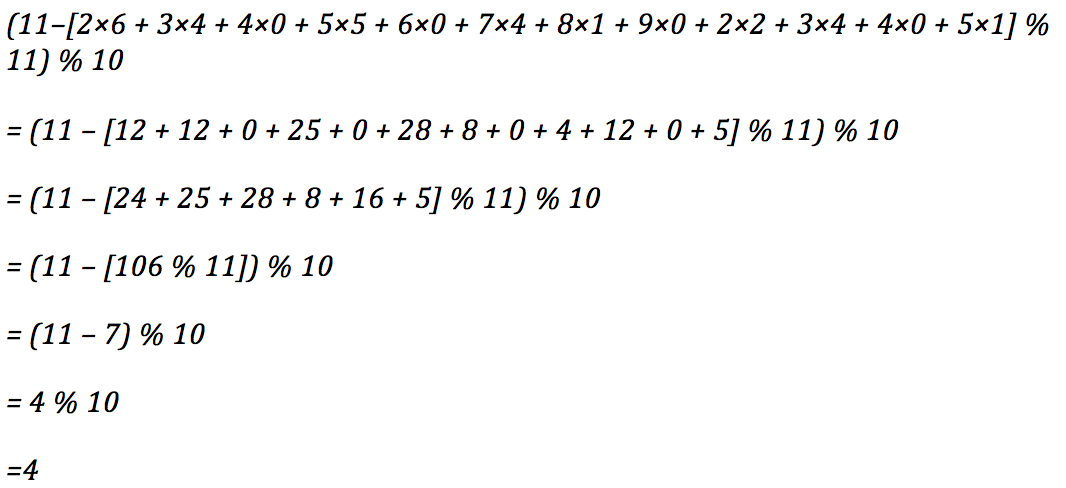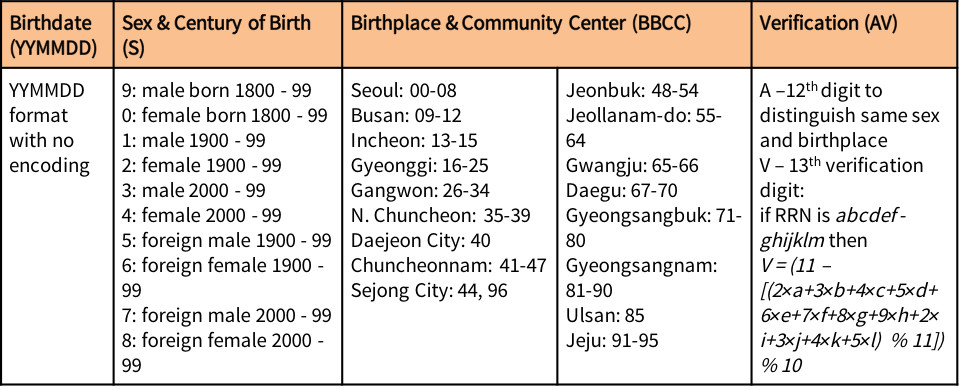KR Resident Registration Number (RRN) Validator Online
To Check a KR Resident Registration Number (RRN) Easily and quickly.
If you want to generate South Korean Resident Registration Number (RRN), here is a KR RRN with name Generator.
If you want to generate more Korean identity info not only RRN information online, here is a KR identity info generator.
How to check a South Korean Resident Registration Number (RRN)?
The South Korean Resident Registration Number (RRN) is a 13-digit number. Each unique RRN explicitly encodes a person’s demographic information. Birthdate, gender, and place of birth are all part of an RRN. The number follows the format YYMMDD – SBBCCAV [11]. Groupings of digits represent demographic encodings that can be deciphered with the information in Table 2. YYMMDD is the person’s date of birth, where YY is the last two digits of the birth year, MM is the person’s two-digit birth month (01 through 12), and DD is the two-digit day of the month (01 through 31). S is a single digit that encompasses gender and century of birth. BBCC is a code for the person’s birthplace and community center. The birthplace is public information, as shown in Table 2, but the community center numbers (CC) are the only two digits whose encoded meanings are not publicly disclosed. Instead, the South Korean Ministry of Public Administration and Security keeps them private. A is a sequential number used to differentiate people of the same sex born on the same day in the same location. V is a check digit used to verify that the other digits are correct.
For example, 6405041024014 would be an RRN for a man born on May 4, 1964, in Seoul. The RRN 6405042024017 would be for a woman born the same day and in the same place. The RRN 6405042024022 would be for another female born on the same date and in the same place.
The verification code is the last digit. Its value depends on the preceding digits in the number itself. A verification digit is a quick way to compute whether a given RRN is correct. If someone enters a number and the checksum digit does not match, then the system can easily determine that the number is not correct. Checksum digits are most commonly used as the last digit in credit card numbers.
The checksum formula for RRNs appears in Table 2. If abcdef – ghijklm represent the first 12 digits of an RRN, then the last digit, V= (11 – [(2×a + 3×b + 4×c + 5×d + 6×e + 7×f + 8×g + 9×h + 2×i + 3×j + 4×k + 5×l) % 11] % 10), where % is the modulus or remainder operation. For the RRN 6405041024014, the last digit is 4. We can test whether this is a valid RRN by computing the last digit from the other digits and seeing if it is 4:

Foreigners residing in South Korea receive an alien registration number (ARN) rather than a RRN. These numbers follow a different encoding pattern.
Encoding scheme of South Korea’s 13-digit Resident Registration Number. The first six digits represent the birthdate in the format YYMMDD. The seventh digit represents a combined value for gender and century of birth. Digits 8 through 11 denote the birthplace and community center. Digit 12 sequentially increases to distinguish persons having the same birth date and place of birth. The last digit, 13, is a checksum calculation performed on the other digits. Details on the following table:
